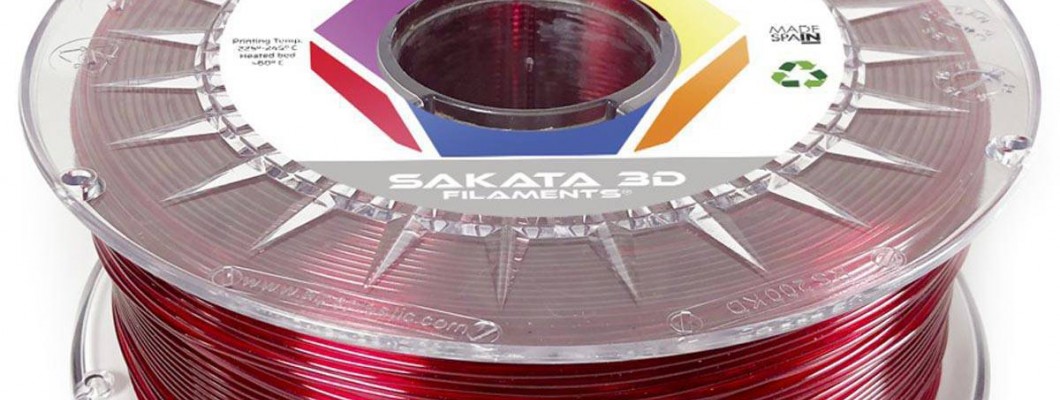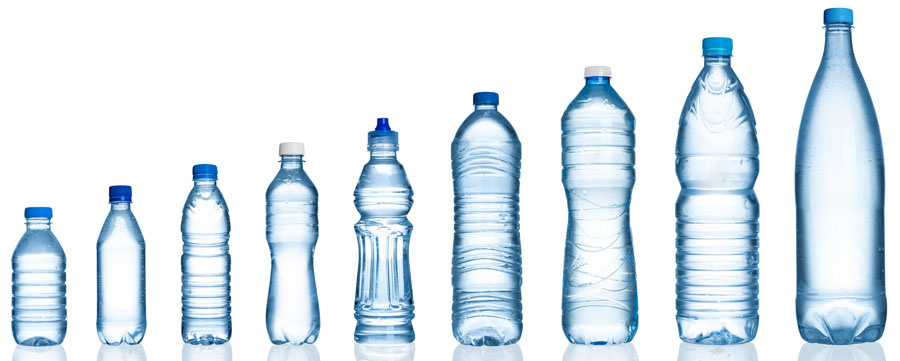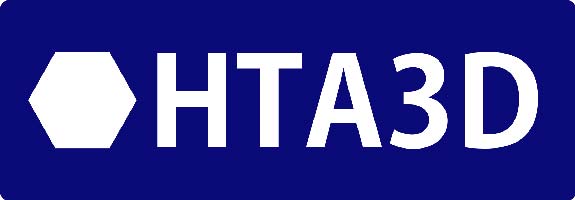
What is PETG?
It is a derivative of PET, one of the most used materials in the industry and in the world. It is the material used in rigid bottle containers due to its excellent mechanical and chemical properties.

In addition, it is a recyclable material, so treated correctly the environmental impact of using this material in 3D printing can be very low.
Another of the uses of PET, is in polyester, PET in the form of fiber can produce fabrics and clothing.

As it is a material with excellent elastic properties, the resulting clothes do not wrinkle easily and are used very widely.
Differences between PET and PETG. What does the G mean?
PETG is a modified PET, usually adding a small amount of "Glycol", where the letter G comes from. Glycol modifies the properties of PET in two key aspects:
- It lowers the melting temperature of the material, so that it can be printed on most 3D printers, since generally the optimum printing temperature is usually around 230°C, being compatible even with extruders with teflon in the hot zone.
- It increases the flexibility of the filament, this makes it ideal for mechanical parts, since the unmodified PET would be too rigid. This additional flexibility makes it similar to ABS and can replace it in many applications.
Comparison with PLA filament
Advantage:
- PETG is much more flexible than PLA, even than modified PLA like 3D850, making it a better material for 3D printer printed parts.
- It has a softening temperature higher than the PLA, so it can be used on parts that are very close to the hotend or motors that get very hot and it maintains its shape.
- The chemical resistance is also higher, the PLA sometimes degrades when in contact with lubricating oils and other chemicals. The PETG resists these situations much better.
- It deforms before breaking. If the part is exposed to shock or excessive force PETG is first deformed elastically recovering its shape, if the force is too high you can get to deform permanently, but without breaking. The PLA however has a much greater tendency to break and crack.
- It mechanizes better, since it can be sanded and drilled much more easily.
Disadvantage:
- It is a very hygroscopic material, even more so than the PLA, so it requires more care when it comes to storage and avoid deterioration over time.
- The control of the flow during 3D printing is more complicated, due to several factors, the PETG is elastic and the pressure changes in the nozzle are not done as accurately as with the PLA, in addition once it has melted it is viscous and sticky , more than other materials, so it is advisable to maintain similar extrusion speeds in the different areas of the piece.
- It has a moderate thermal contraction, so the hanging areas will be more deformed than with PLA, in addition the use of the heated bed is essential for this same reason.
- Threads can remain in 3D printing more easily than with PLA, since PETG is viscous and sticky, it usually remains attached to the nozzle leaving spots and marks. Wearing the silicone sock is more than recommended, as it avoids the problems caused by this.
Comparison with ABS filament
Advantage:
- The thermal shrinkage is much lower than that of ABS, making it possible to print large parts that cannot be printed with ABS or are very difficult to print, with PETG they will print without problems.
- PETG has a much stronger bond between layers than ABS (although not as much as PLA), so together with the lower thermal contraction, this material does not have ABS problems, such as delaminations, warping and cracking.
- It needs less temperature both in the hotend and at the base, which makes it cheaper to work, easier, compatible with low-power 3D printers, and provides better part tolerances.
- The result in the printed parts for 3D printers is better in all aspects, the parts are more precise and flexible. In addition, the printing process is simpler with fewer possible problems and parts that cannot be printed with ABS or they could with excessive difficulty can be printed with PETG.
Disadvantage:
- The softening temperature of the ABS remains higher, so in certain situations the PETG cannot replace the ABS.
- ABS continues to behave better against certain chemical agents, so ABS will also prevail in these applications.
- It is not machined as well as ABS.
Summary
PETG is a material that is between PLA and ABS in terms of mechanical properties, and ease of use.
It is a material that stands out in very popular 3D printing applications, such as the production of the printed parts of the 3D printers.
The cost of the material is slightly higher than today (2019), but it is expected to match the PLA and the ABS in the coming years, as its use becomes popular.


Leave a Comment